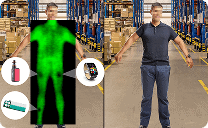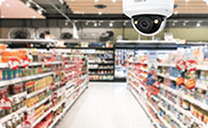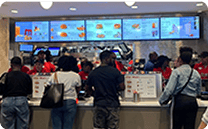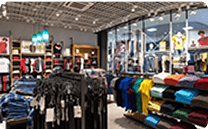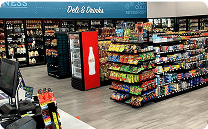In This article
They say the customer is always right—and most operators in customer-facing roles still uphold that belief. But how do you balance ensuring the customer is always right with the ever-changing consumer expectations? Customer expectations are soaring; they want what they want, how they want it, and as quickly as possible. This is why Speed of Service (SoS) is crucial for customer-facing businesses.
The concept of SoS isn’t new to most business owners; it’s a critical component of operations. Today’s business owners are constantly seeking new and improved methods to drive revenue, and optimizing SoS is essential across all environments. However, enhancing your speed of service is no easy feat. Let’s explore what SoS is and—more importantly—how to improve it.
Summary
Speed of Service (SoS) refers to the time it takes for a business to serve its customers. This metric is especially critical in the restaurant industry, where people expect their orders to be efficiently served. From fine dining to quick service, SoS plays a vital role in customer satisfaction.
However, increasing your speed of service is challenging as you balance other customer expectations. You don’t want to risk getting orders wrong, making mistakes, or serving dishes that don’t meet your standards. After all, this can lead to unhappy customers. The goal is to be fast while maintaining accuracy.
Here are some strategies to improve your speed of service:
- Measure Your Speed of Service: You can’t improve what you don’t measure. Tracking SoS provides a baseline to identify areas for improvement.
- Optimize Your Staff Schedule: Ensure you have the right number of staff during peak times. Scheduling top performers during busy hours can help maintain a smooth operation.
- Leverage DTiQ’s AI-Driven Reporting Tools: Use DTiQ’s SmartAudit™ and Data Vision Solutions to forecast popular items, peak times, and more. These insights help you prepare food ahead of time without compromising quality or creating waste.
- Incorporate AI Technology: DTiQ’s AI solutions, like Drive-Thru Monitoring, are specifically tailored for quick-service restaurants (QSRs) and other customer-facing businesses. They provide actionable insights, automate data analysis, and help optimize operations without requiring you to become an AI specialist.
For a deeper dive into speed of service and more tips on how to improve it, keep reading. Or, if you want quick wins now, download our speed of service guide.
What is Speed of Service?
Speed of Service is the measurement of how long it takes for a business to serve its customers. However, measuring SoS isn’t as simple as “getting guests out the door as soon as possible.” Depending on your industry, the goals around SoS can differ. Evaluating your space and understanding your customers’ expectations is crucial before setting any measurements.
Consider the difference between a quick-service restaurant and a fine dining experience. In a QSR, speed of service is everything—customers want to get in and out quickly. In contrast, in fine dining, customers pay for a leisurely experience. Rushing them out would likely result in unhappy guests.
Why is Speed of Service Important?
As a business owner, you know how important it is to keep customers happy. Happy customers bring repeat business, leave positive reviews, and ultimately keep your doors open. In some industries, SoS is the cornerstone of customer satisfaction. Imagine how quickly your morning coffee rush would dissipate if you couldn’t keep up with the commuters.
As a diner, you’ve likely experienced the frustration of slow service, whether it’s waiting for a morning coffee, being stuck in a slow drive-thru, or rushing through a meal on a tight lunch break.
How to Improve Speed of Service
- Measure It: You can’t improve what you can’t measure. Properly measuring SoS is the key to making meaningful improvements. You should also look at SoS across different areas, such as time spent ordering, preparing food, and processing payments.
- Streamline Processes: Use data-driven insights from DTiQ to identify bottlenecks and inefficiencies. Streamlining operations can help reduce unnecessary steps and delays, boosting your SoS.
- Provide Adequate Training: Ensure employees are well-trained and equipped to make quick decisions. Training your team during slow periods can help them feel confident and protect the guest experience.
- Leverage DTiQ Technology: Implement DTiQ’s AI-driven POS systems, order management systems, and CRM software to automate tasks and improve efficiency. Our intelligent video solutions can also help you measure and analyze your SoS.
.png)
- Self-Service Options: Self-service options, such as kiosks or self-checkouts, can empower customers to take control of their experience, speeding up service without increasing labor costs. However, it’s important to have staff available to assist when needed and manage the kitchen accordingly.
Improve Your Speed of Service with Ease
Speed of Service is a critical factor in the success of any customer-facing business. By following these tips and leveraging AI-driven solutions from DTiQ, you can enhance your SoS, resulting in happier customers and more efficient operations.
- What DTiQ Can Do to Help: DTiQ provides a range of tools to enhance SoS, including exception-based reporting, remote audits, drive-thru monitoring, and AI-powered analytics that offer real-time data and actionable insights. These solutions ensure comprehensive operational control, allowing businesses to swiftly identify and address any service issues.
- AI in Action: Explore how DTiQ’s AI technology can improve your speed and efficiency. Check out our videos demonstrating AI in action, where we use anonymized footage to show practical examples of our technology improving SoS.
Want to see how DTiQ’s cutting-edge solutions can revolutionize your speed of service? Book a demo today or contact us to learn how we can help you measure and improve your SoS. Unlock happy customers and happier management!
FAQ around Speed of Service
- What is Speed of Service?
Speed of service is the measurement of how fast you serve guests at your business from start to finish. - What is an Example of Speed of Service?
An example of speed of service is how long it takes for a quick service restaurant to serve someone their morning coffee. - Why is Speed of Service Important?
Speed of service is important because when guests expect something fast, they want it fast. Failing to meet these expectations can negatively impact the customer experience. - What Industries Does Speed of Service Matter?
SOS is particularly important in industries like quick service restaurants, drive-thru establishments, and fast-casual restaurants. - How Do I Improve Speed of Service at My QSR?
The first step to improving SOS is measuring it. If you can’t measure it, you can’t improve it. - How Do I Improve Drive-Thru Speed of Service?
Start by measuring your drive-thru performance. This will help you identify areas for improvement. - What’s More Important—Quality or Speed of Service?
Both are equally important. Quality and speed of service must be achieved without compromising one for the other.
